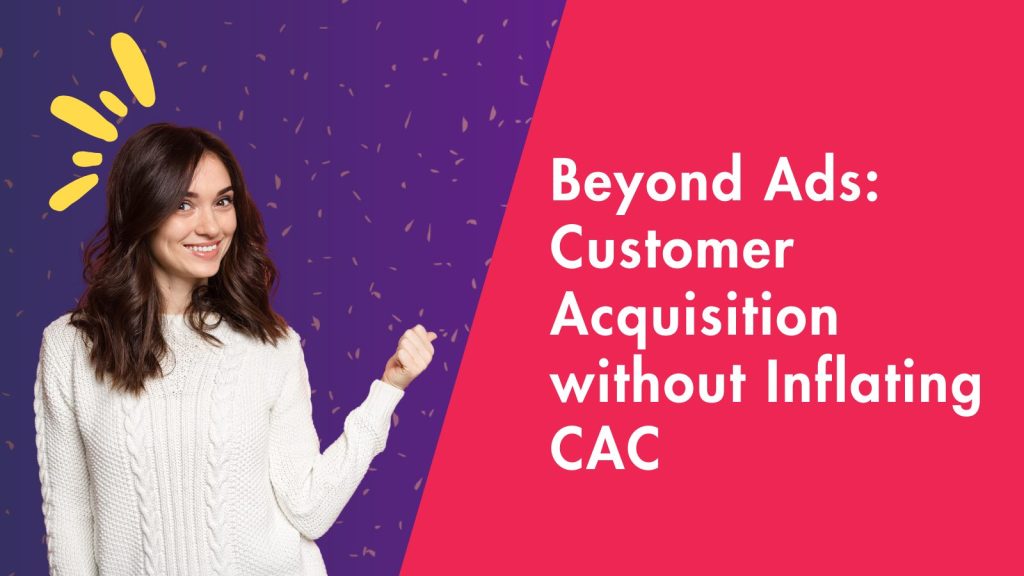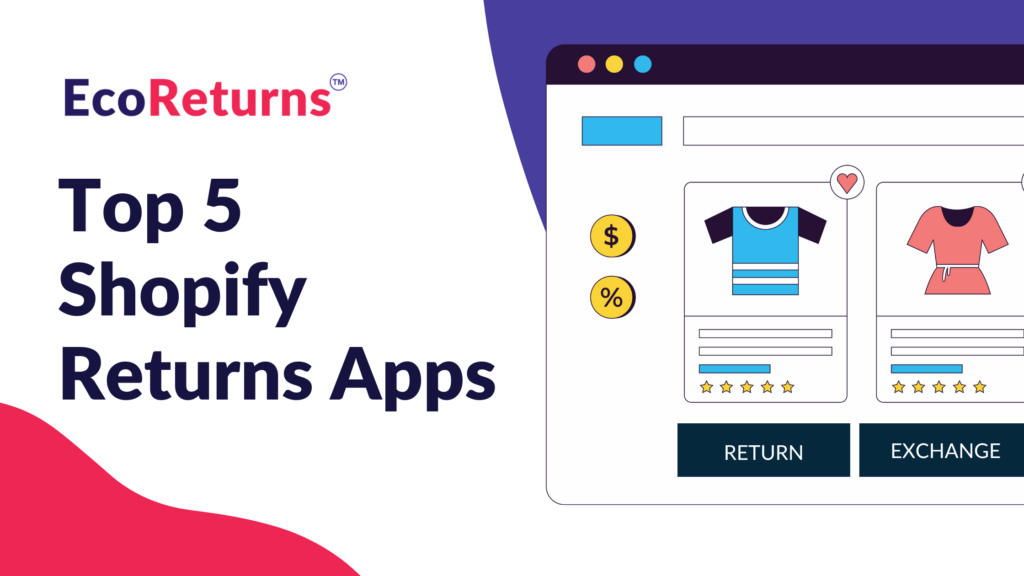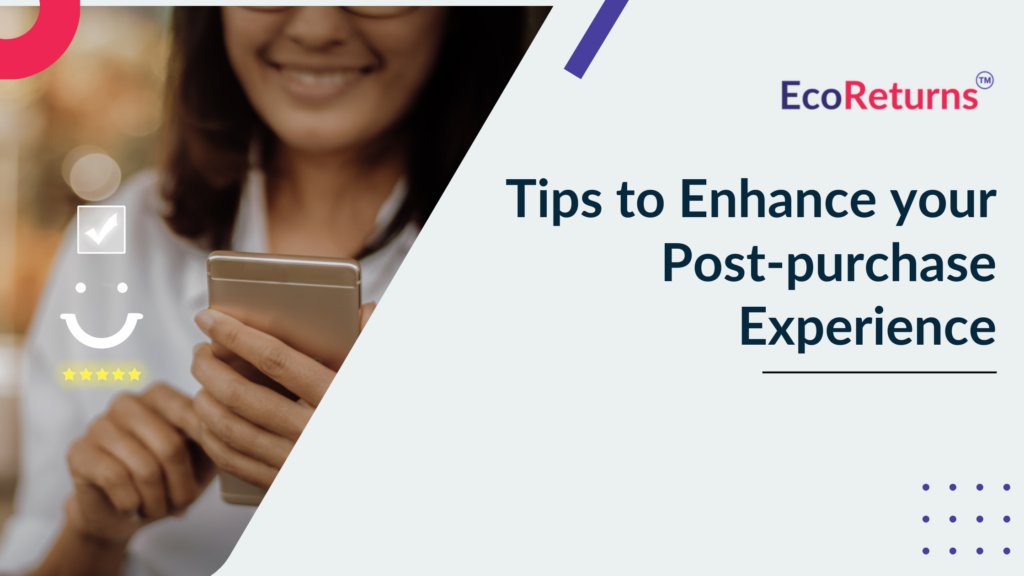In the rapidly changing world of e-commerce, businesses are always attempting to outperform other companies and draw in customers, making the quest for new clients something of a high-stakes game. However, behind the flurry of advertising efforts and marketing blitzes, an important reality remains the growing concern about Customer Acquisition Costs (CAC).
The traditional path to customer acquisition for eCommerce businesses frequently entails investing a substantial amount of money in advertising campaigns across numerous platforms. Although this strategy works well for producing results right away, it can also put organizations in a risky downward spiral of costs as they compete for the consumer\’s interest.
Come along as we explore innovative strategies including content marketing, influencer partnerships, SEO, user-generated content, email marketing, and customer retention. Learn how eCommerce companies can cross this new path to long-term success. Getting Customers for eCommerce Brands Without Increasing CAC is our mission.
What is Customer Acquisition Cost (CAC)?
Customer acquisition cost (CAC) is the total cost a business incurs to acquire a new customer. This includes all expenses related to marketing, advertising, sales activities, and any other resources used to attract and convert a prospect into a paying customer.
To calculate the CAC, you would typically divide the total acquisition expenses by the number of new customers acquired within a specific time period. CAC is an important metric for businesses because it helps them understand how much they need to invest to acquire each customer and whether their marketing and sales efforts are cost-effective.
Customer Acquisition Funnel:
The customer acquisition funnel, also known as the sales funnel or marketing funnel, is a visual representation of the journey that potential customers go through from being unaware of a product or service to becoming paying customers. It\’s called a \”funnel\” because, like a funnel, it starts with a broad audience at the top and narrows down as people progress through each stage. Here\’s an explanation of each stage of the customer acquisition funnel:
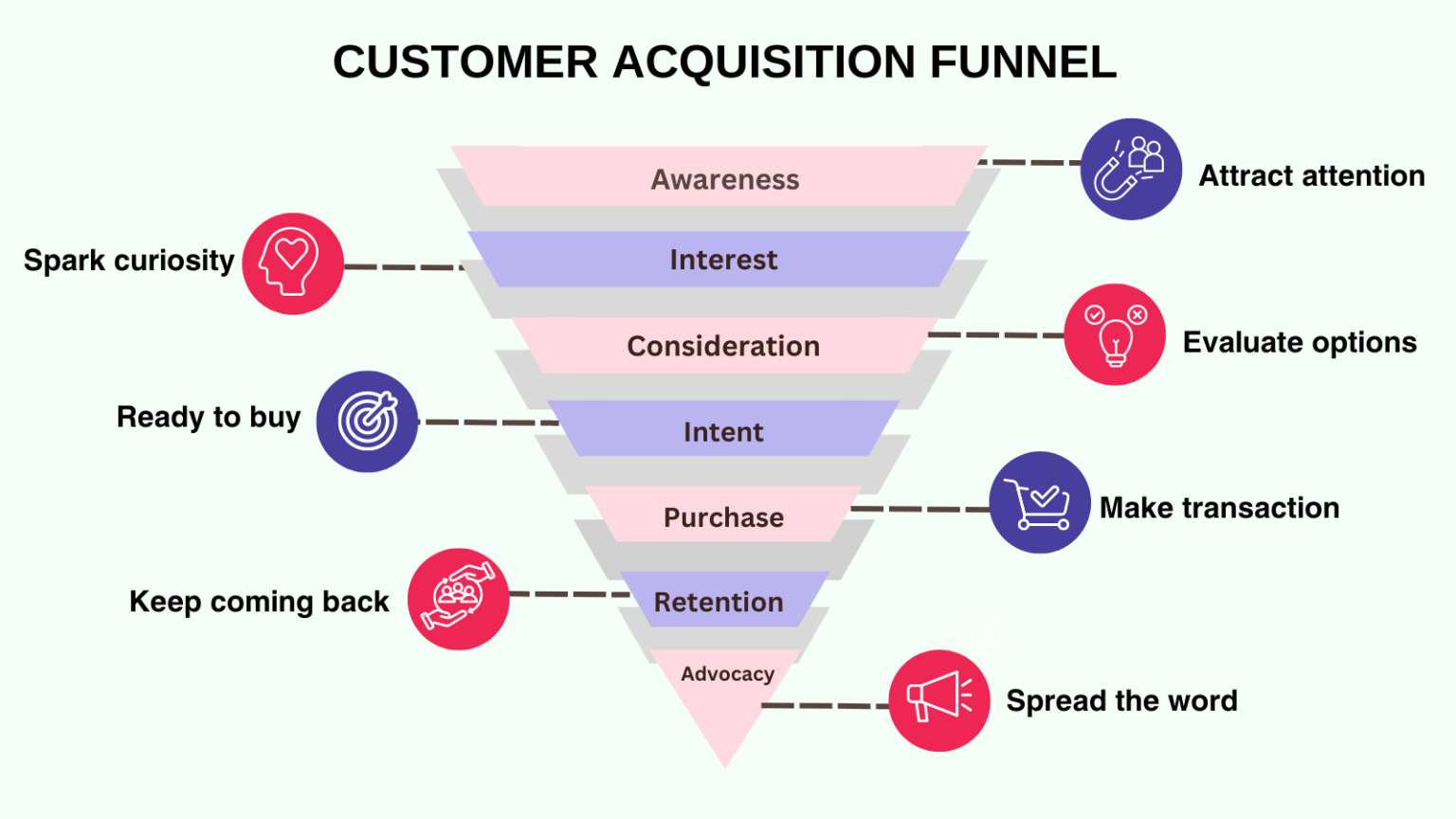
Awareness: This is the top of the funnel where people become aware of your brand, product, or service. It\’s about making your target audience aware of your existence and what you offer. This can be achieved through various marketing channels such as social media, content marketing, advertising, and word-of-mouth.
Interest: In this stage, people who are aware of your brand or product begin to show interest. They may engage with your content, visit your website, or sign up for your email list. The goal here is to capture their interest and keep them engaged with your brand.
Consideration: At this stage, potential customers are actively considering whether to purchase from you. They may compare your offerings with those of competitors, read reviews, and research more about your product or service. It\’s essential to provide them with valuable information and address any concerns they may have to move them closer to making a purchase.
Intent: In this stage, potential customers have expressed a clear intent to make a purchase. They may add items to their cart, request a quote, or sign up for a free trial. The focus here is on facilitating the buying process and removing any barriers that could prevent them from completing the purchase.
Purchase: This is the bottom of the funnel where the potential customer becomes an actual customer by making a purchase. It\’s the culmination of all the efforts made to attract, engage, and convert them. However, the customer acquisition funnel doesn\’t end here.
Retention: After making a purchase, the goal is to retain customers and encourage repeat purchases. This involves providing excellent customer service, building relationships, and offering incentives or rewards to keep them coming back.
Advocacy: Satisfied customers may become advocates for your brand, spreading positive word-of-mouth and recommending your products or services to others. This stage can help attract new customers and further fuel the customer acquisition process.
By understanding and optimizing each stage of the customer acquisition funnel, businesses can effectively attract, engage, and convert potential customers into loyal advocates, ultimately driving growth and success.
Understanding the Challenge: Rising CAC in eCommerce
Acquiring new customers could turn out to be six or seven times more expensive than retaining existing ones, according to Zippia. Consumers nowadays are constantly exposed to marketing content through a variety of channels, such as email campaigns and ads on social media. In order to break above the noise and grab customers\’ attention, companies have to use more complex targeting and personalization techniques, which raises acquisition costs even more.
Let\’s examine the causes of the rising CAC in eCommerce and the effects they have on businesses in more detail.
1. Intensifying Competition:
As eCommerce continues to flourish, fueled by technological advancements and changing consumer preferences, the landscape has become increasingly crowded with competitors vying for the attention of potential customers. With numerous players entering the market and existing ones expanding their reach, the competition for consumer attention has intensified, driving up the costs associated with customer acquisition.
2. Saturation of Advertising Channels:
Traditional advertising channels, such as social media platforms, search engines, and display networks, have long been staple avenues for eCommerce brands to reach their target audience. However, the saturation of these channels has made it more challenging for businesses to stand out amidst the noise. As competition for ad space intensifies, the cost of advertising rises, leading to an increase in CAC for eCommerce brands.
3. Evolving Consumer Behavior:
The behavior and preferences of consumers are constantly evolving, influenced by factors such as technological advancements, cultural shifts, and economic conditions. In the age of information overload, consumers have become increasingly discerning, demanding personalized experiences and meaningful interactions with brands. Meeting these expectations requires eCommerce brands to invest in targeted marketing efforts, driving up the cost of customer acquisition.
4. Complexity of Attribution Models:
Measuring the effectiveness of marketing campaigns and accurately attributing conversions to specific channels has become increasingly complex in the digital age. With consumers engaging with multiple touchpoints across various devices and platforms before making a purchase, determining the true impact of each marketing channel on customer acquisition can be challenging. As a result, eCommerce brands may overspend on certain channels, inflating their overall CAC.
5. Adverse Market Conditions:
External factors, such as economic downturns, changes in consumer sentiment, and global events, can have a significant impact on the cost of customer acquisition for eCommerce brands. During periods of uncertainty or instability, businesses may need to allocate additional resources to maintain their market presence and attract customers, further driving up CAC.
Implications for eCommerce Brands:
The rising CAC in eCommerce has far-reaching implications for businesses, affecting their bottom line, profitability, and long-term sustainability. Some of the key implications include:
- Reduced Profit Margins: As CAC increases, businesses may experience shrinking profit margins, especially if they are unable to adjust their pricing or optimize their marketing strategies accordingly.
- Financial Strain: High CAC can put a strain on the financial resources of eCommerce brands, particularly startups and small businesses with limited budgets. Overspending on customer acquisition without a corresponding increase in revenue can lead to cash flow challenges and financial instability.
- Impact on Growth: Escalating CAC can hinder the growth potential of eCommerce brands, limiting their ability to scale and expand their customer base. This, in turn, may impede their competitiveness and market share in the long run.
- Risk of Customer Churn: If the cost of acquiring customers exceeds their lifetime value (LTV), businesses may struggle to achieve a positive return on investment (ROI) from their marketing efforts. This can increase the risk of customer churn, as businesses are unable to sustain profitable relationships with their customers over time.
In light of these challenges, eCommerce brands must adopt a strategic approach to customer acquisition, focusing on efficiency, effectiveness, and long-term value. By diversifying their marketing channels, optimizing their campaigns, and prioritizing customer retention, businesses can mitigate the impact of rising CAC and chart a path toward sustainable growth and success in the competitive eCommerce landscape.
Strategic Approches to Customer Acquisition:
1. Harnessing the Power of Content Marketing:
Creating Valuable Content:
Creating valuable content is crucial for attracting and engaging your audience. This means producing content that is not only high-quality but also relevant to your target audience\’s interests and needs. Whether it\’s through blogs, videos, infographics, or other formats, the goal is to provide information or entertainment that resonates with your audience and adds value to their lives.
Establishing Authority:
Content marketing is an effective way to position your brand as an industry leader and build trust with your audience. By consistently delivering valuable and insightful content, you demonstrate your expertise and authority in your niche.
Successful content marketing strategies often involve sharing case studies, whitepapers, how-to guides, and other informative content that showcases the brand\’s knowledge and expertise.
You can create it all with ease using Visme templates for white papers and other graphic assets, no design skills required.
2. Leveraging Influencer Partnerships:
The Role of Influencers in eCommerce:
Influencers play a significant role in shaping consumer behavior, particularly in eCommerce. Social media personalities have the power to sway their followers\’ purchasing decisions through endorsements and product recommendations.
Leveraging influencer partnerships allows brands to tap into these pre-existing communities and leverage the trust and credibility that influencers have built with their audience.
Finding the Right Influencers:
Selecting the right influencers for your brand is essential for the success of influencer partnerships. It\’s crucial to choose influencers whose values and audience demographics align with your brand.
Criteria for selecting influencers may include their engagement rates, audience demographics, and brand alignment. Case studies highlighting successful influencer partnerships can provide valuable insights into the impact of influencer marketing on consumer behavior and brand visibility.
3. Optimizing for Search Engines:
Importance of SEO in eCommerce:
Search Engine Optimization (SEO) is critical for eCommerce brands seeking to improve their visibility in search engine results and drive organic traffic to their website. Organic search traffic represents a significant portion of overall website traffic and is highly valuable due to its intent-driven nature.
On-Page Optimization:
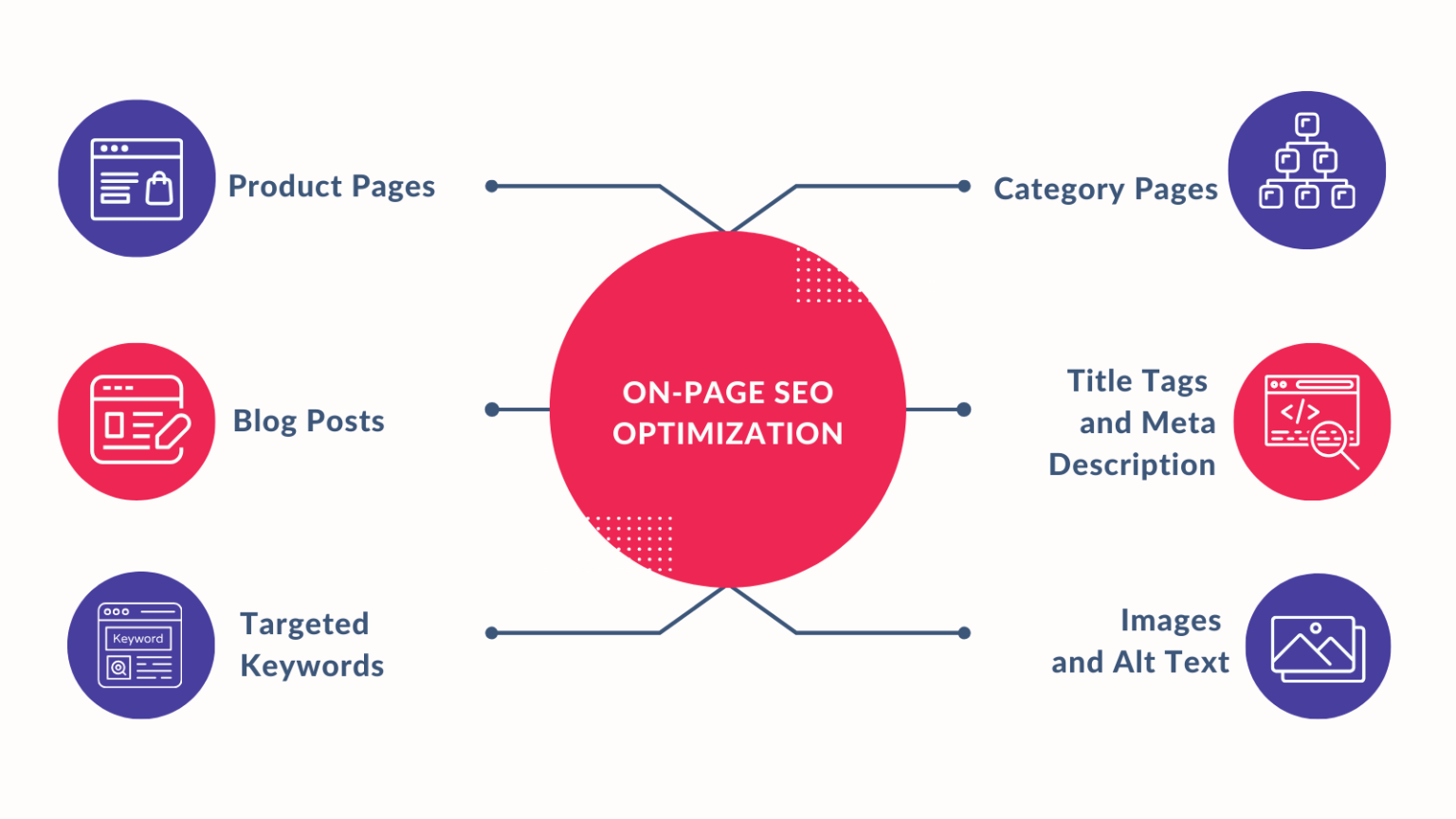
On-page optimization involves optimizing individual web pages to improve their search engine rankings and attract more organic traffic. Strategies for on-page optimization include optimizing product pages and content for relevant keywords, conducting keyword research, and optimizing metadata such as title tags and meta descriptions.
Content Creation for SEO:
Developing content that ranks well in search engine results while also providing value to users is essential for SEO success. Brands must strike a balance between meeting SEO requirements, such as using relevant keywords and optimizing content structure, and providing a positive user experience.
4. Embracing User-Generated Content:
Harnessing the Power of Social Proof:
User-generated content (UGC) serves as powerful social proof for eCommerce brands, helping to build trust and credibility with potential customers. Reviews, testimonials, and social media posts from satisfied customers can influence purchasing decisions and encourage others to buy from your brand.
Encouraging Customer Participation:
Encouraging customers to create and share user-generated content can be achieved through various tactics, such as incentivizing reviews or testimonials, creating branded hashtags for social media campaigns, or featuring user-generated content on your website and marketing materials. Leveraging social media platforms for user engagement allows brands to interact with their audience and cultivate a sense of community around their products.
5. Investing in Customer Retention:
Personalized Experience:
Personalized interaction is about understanding individual customer preferences and delivering tailored experiences across various touchpoints. Companies like Netflix use data analytics to recommend personalized content based on viewers\’ watch history, while Spotify employs push notifications to suggest personalized playlists.
Additionally, Amazon\’s recommendation engine anticipates customers\’ future needs, enhancing the shopping experience by offering relevant products and deals. By adapting communication channels and proactively addressing customer needs, businesses foster deeper connections with their customers, driving loyalty and long-term success in today\’s competitive landscape.
Building Loyalty Programs:
Loyalty programs are effective tools for incentivizing repeat purchases and fostering customer loyalty. Designing and implementing loyalty programs that offer rewards, discounts, or exclusive perks to loyal customers can encourage repeat business and strengthen the relationship between the brand and its customers.
WyseMe:
WyseMe offers an AI-powered joint eCommerce loyalty program designed to help businesses retain shoppers and drive growth.
By partnering with WyseMe, businesses can enjoy several benefits, including:
- Reaching a Wider Customer Base: WyseMe enables businesses to expand their reach by tapping into a broader network of potential customers, increasing brand exposure and market penetration.
- Higher Redemption of Loyalty Points: With WyseMe\’s AI-powered platform, businesses can experience higher redemption rates of loyalty points, leading to increased customer engagement and loyalty.
- New Customer Acquisition: By participating in WyseMe\’s joint eCommerce loyalty program, businesses have the opportunity to attract new customers who are drawn to the program\’s benefits and incentives.
- Boosting Brands with Extended Buying Cycle: WyseMe helps businesses extend their buying cycle by encouraging repeat purchases and fostering long-term customer relationships, ultimately boosting brand loyalty and revenue.
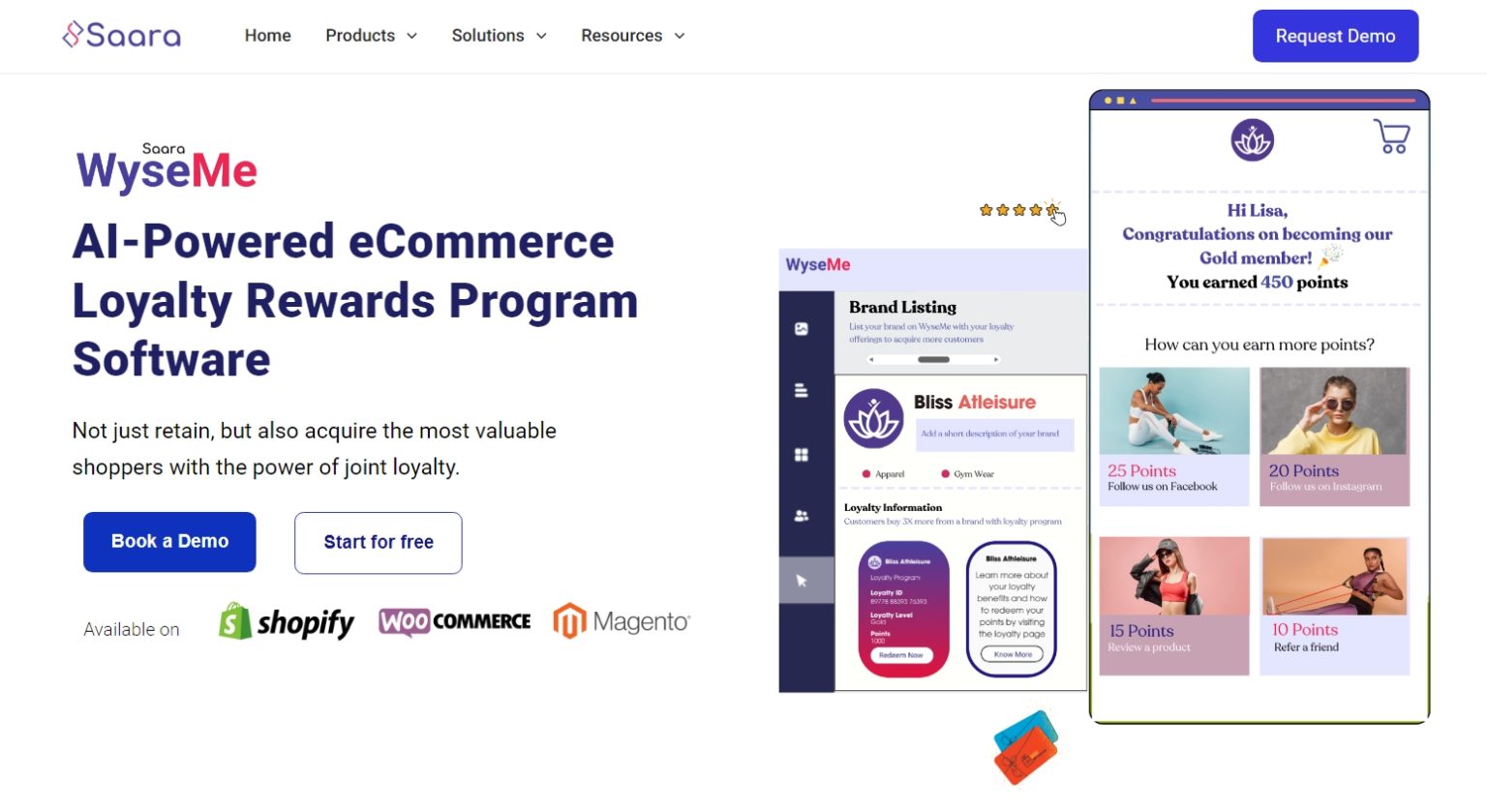
Shoppers also benefit from WyseMe\’s loyalty program in several ways, including:
- Wide Range of Rewards: Shoppers have access to a diverse range of rewards, including discounts, freebies, and exclusive offers from participating businesses, enhancing their overall shopping experience.
- Instant Gratification with Loyalty Points: WyseMe provides shoppers with instant gratification through the accumulation and redemption of loyalty points, allowing them to enjoy rewards quickly and effortlessly.
- Access to Special Privileges: Shoppers gain access to special privileges and perks reserved for loyalty program members, such as early access to sales, exclusive events, and personalized offers, enhancing their sense of value and loyalty to participating brands.
6. Cultivating Email Marketing Strategies:
The Effectiveness of Email Marketing:
Email marketing remains one of the most cost-effective and high-ROI marketing channels for eCommerce brands. Statistics show that email marketing campaigns have a higher ROI compared to other digital marketing tactics, making it a valuable tool for driving sales and customer engagement.
Segmentation and Personalization:
Segmenting email lists based on customer behavior, preferences, and demographics allows brands to deliver targeted content and offers to specific segments of their audience. Personalizing email content based on recipient data and past interactions improves engagement and conversion rates, leading to higher ROI for email marketing campaigns.
In conclusion:
Navigating the challenges of rising CAC requires eCommerce brands to embrace innovation, adaptability, and a customer-centric mindset. By leveraging a diverse array of strategies and prioritizing customer value, eCommerce brands can chart a course toward enduring prosperity in the competitive digital landscape. By embracing innovative strategies and utilising platforms like WyseMe, eCommerce brands can chart a path toward sustainable growth and success in the competitive digital landscape.
Read more: 7 Types of Customer Loyalty Programs
